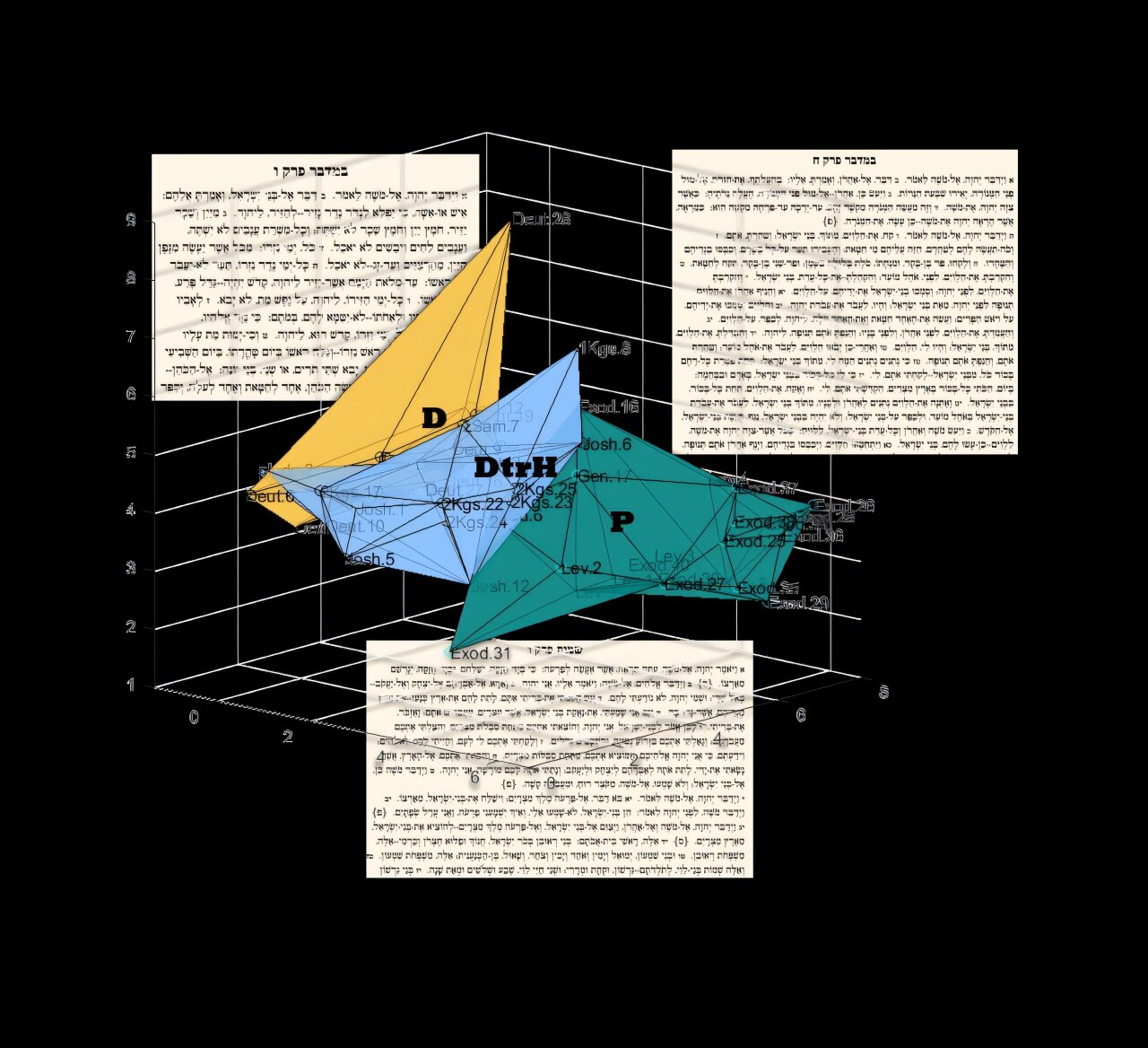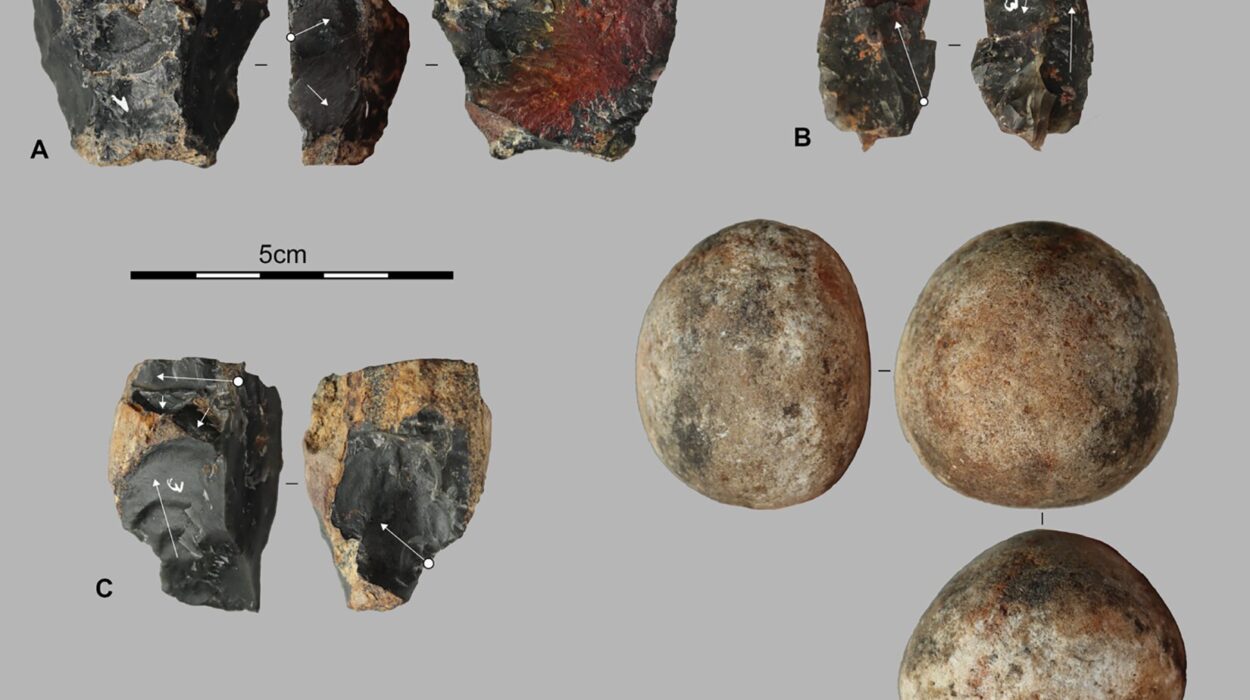The intersection of artificial intelligence (AI) and biblical studies might seem like an unlikely pairing, but a recent groundbreaking study has revealed how this advanced technology can be leveraged to solve some of the most enduring mysteries surrounding one of the world’s most revered ancient texts: the Bible. By combining AI, statistical modeling, and linguistic analysis, an international team of researchers, led by Shira Faigenbaum-Golovin, an assistant research professor of Mathematics at Duke University, has embarked on a mission to identify the authorship of biblical texts with unprecedented precision.
The project, which was published in the prestigious journal PLOS One, marks a pioneering effort to utilize AI in the study of ancient literature. Through the use of statistical models and deep linguistic analysis, the team aimed to analyze subtle variations in word usage across biblical texts, focusing on the Hebrew Bible’s first nine books, known as the Enneateuch (the first nine books of the Hebrew Bible). This effort represents the cutting-edge of what AI can offer in fields beyond traditional applications like finance, medicine, and entertainment.
The Genesis of an Innovative Collaboration
The path to this revelation started over a decade ago. In 2010, Faigenbaum-Golovin began collaborating with Israel Finkelstein, a leading archaeologist and head of the School of Archaeology and Maritime Cultures at the University of Haifa. Their initial work revolved around analyzing ancient inscriptions, specifically those found on pottery fragments dating back to 600 B.C. By comparing the shape and style of the letters inscribed on these fragments, the duo used mathematical and statistical tools to uncover key insights about the history and origins of these texts.
The significance of their work was recognized widely and even made the front page of The New York Times. Faigenbaum-Golovin reflected on the importance of this discovery: “We concluded that the findings in those inscriptions could offer valuable clues for dating texts from the Old Testament.” This laid the groundwork for what would become a much broader interdisciplinary study.
In 2016, Faigenbaum-Golovin and Finkelstein began assembling a multidisciplinary team composed of archaeologists, biblical scholars, mathematicians, physicists, and computer scientists, all determined to apply their collective expertise to unravel the complexities of biblical authorship. The result was a unique collaboration of scientific minds coming together to explore the ancient world using modern-day technology.
The Multidisciplinary Approach: A Fusion of Science and Humanities
The research team included Alon Kipnis from Reichman University, Axel Bühler from the Protestant Faculty of Theology in Paris, Eli Piasetzky from Tel Aviv University, and Thomas Römer from Collège de France. Together, they embarked on a deep exploration of the language patterns within the Hebrew Bible, applying cutting-edge AI algorithms to better understand the authorship of its various texts.
What made this project unique was its fusion of multiple disciplines. While the researchers’ background in the humanities provided essential expertise in biblical scholarship, the mathematical and computational minds contributed by Faigenbaum-Golovin and her team helped bridge the gap between ancient texts and modern scientific methods. The result was a model that could analyze the language used in the Bible with a level of precision previously thought to be unattainable.
Statistical Models Meet Ancient Texts
One of the core innovations of the study was the creation of an AI-based statistical model that could detect language patterns within biblical texts. The team focused their attention on the Bible’s first five books—Genesis, Exodus, Leviticus, Numbers, and Deuteronomy—along with the historical books of Joshua, Judges, Samuel, and Kings. These texts, known collectively as the Deuteronomistic History, along with the priestly writings in the Torah, represent key sections of the Bible with distinct linguistic traits.
The statistical model was tasked with analyzing the usage of words, sentence structure, and grammatical patterns across different sections of the Bible. Surprisingly, the analysis revealed that Deuteronomy and the historical books shared more linguistic similarities with each other than with the priestly texts. This finding aligns with the consensus among biblical scholars, who have long identified these texts as being part of a distinct scribal tradition. According to Thomas Römer, one of the leading biblical scholars on the team, “We found that each group of authors has a different style—surprisingly, even regarding simple and common words such as ‘no,’ ‘which,’ or ‘king.’ Our method accurately identifies these differences.”
Testing the Model: Analyzing the Enneateuch
Once the statistical model was developed and refined, the next step was to test it. The team selected 50 chapters from the first nine books of the Bible, known as the Enneateuch. These books—Genesis, Exodus, Leviticus, Numbers, Deuteronomy, Joshua, Judges, Samuel, and Kings—are central to the study of biblical authorship and have long been the subject of intense scholarly debate.
Biblical scholars have already categorized these chapters based on their distinct writing styles, and the AI model was tasked with comparing these sections to identify which linguistic patterns were most prevalent. Faigenbaum-Golovin explained the process: “The model compared the chapters and proposed a quantitative formula for allocating each chapter to one of the three writing styles.” The model was able to assign each chapter to its most likely authorial group, based on its linguistic similarities to other known texts.
The AI model’s success in identifying these patterns confirmed long-standing scholarly hypotheses. But perhaps more importantly, the model could also explain how it arrived at its conclusions. This feature of transparency is one of the critical advantages of AI over traditional methods of analysis. As Alon Kipnis noted, “One of the main advantages of the method is its ability to explain the results of the analysis—that is, to specify the words or phrases that led to the allocation of a given chapter to a particular writing style.”
Overcoming the Challenges of Limited Data
The Bible, like many ancient texts, has undergone multiple layers of editing and revision over centuries. This means that the language in the text today may not reflect the original wording of the authors. The team had to navigate these complexities carefully.
Since many biblical texts have been heavily edited, it was challenging to identify sections that retained their original language. Moreover, these texts are often very short—sometimes only a few verses—which made the use of traditional statistical methods and standard machine learning approaches impractical. The team had to develop a custom approach capable of handling these fragmented and limited datasets.
To circumvent the limitations of limited data, the researchers chose not to use traditional machine learning algorithms, which typically require large datasets for training. Instead, they adopted a more direct method of analysis. This approach involved comparing sentence patterns and the frequency of specific words and word roots (lemmas) to determine whether different sections of the Bible were likely to have been written by the same group of authors. Faigenbaum-Golovin explained, “We spent a lot of time convincing ourselves that the results we were getting weren’t just garbage. We had to be absolutely sure of the statistical significance.”
Surprising Findings and New Insights
One of the most surprising discoveries made during the study was the analysis of the Ark Narrative in the Books of Samuel. While both parts of the narrative are thematically related, the model found that the text in 1 Samuel did not align with any of the three primary scribal traditions identified. On the other hand, the text in 2 Samuel showed clear affinities with the Deuteronomistic History. This finding challenges conventional assumptions about the authorship of these sections and raises intriguing new questions for scholars to explore.
Looking ahead, Faigenbaum-Golovin believes that the AI methodology developed for this study could be applied to other historical documents. “If you’re looking at document fragments to find out if they were written by Abraham Lincoln, for example, this method can help determine if they are real or just a forgery,” she said. This opens up the possibility for AI to be used in the analysis of other ancient texts, such as the Dead Sea Scrolls, to uncover new insights about their origins and authorship.
A New Paradigm for Analyzing Ancient Texts
As Israel Finkelstein, a key collaborator in the study, summarized: “The study introduces a new paradigm for analyzing ancient texts.” This interdisciplinary approach, combining the humanities with cutting-edge technology, is opening new avenues for scholarly research. It not only redefines how we approach the study of ancient texts but also demonstrates the profound potential of AI in revolutionizing disciplines that have long relied on traditional methods.
Faigenbaum-Golovin and her team are already exploring the possibility of applying this methodology to other ancient documents. “It’s such a unique collaboration between science and the humanities,” she said. “It’s a surprising symbiosis, and I’m lucky to work with people who use innovative research to push boundaries.” The study has revealed how AI can act as a bridge between the ancient and modern worlds, offering new perspectives and insights that were once beyond reach.
Conclusion: AI’s Revolutionary Role in Biblical Scholarship
AI’s role in biblical scholarship represents a shift in how we engage with the ancient world. By using advanced tools like statistical modeling and linguistic analysis, researchers can now approach questions about biblical authorship in ways that were previously unimaginable. The study not only brings us closer to understanding the true origins of one of the world’s most important texts, but it also exemplifies how science and the humanities can work together to uncover truths about our past.
As technology continues to evolve, we can expect even more groundbreaking applications of AI in the study of ancient texts, from the Bible to other long-lost manuscripts. The fusion of technology with scholarly inquiry holds the promise of unveiling new layers of historical knowledge, reshaping how we understand the written word and its impact on human history.
Reference: Shira Faigenbaum-Golovin et al, Critical biblical studies via word frequency analysis: Unveiling text authorship, PLOS One (2025). DOI: 10.1371/journal.pone.0322905






